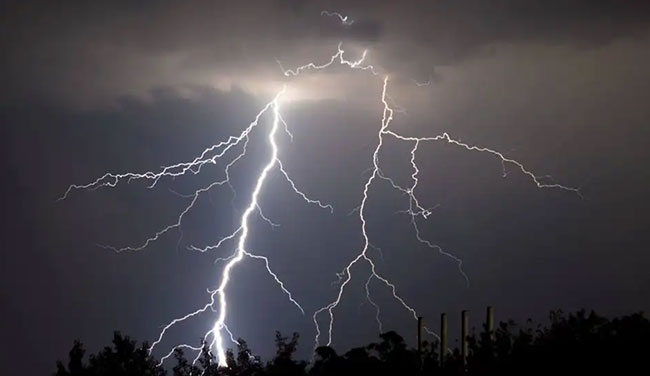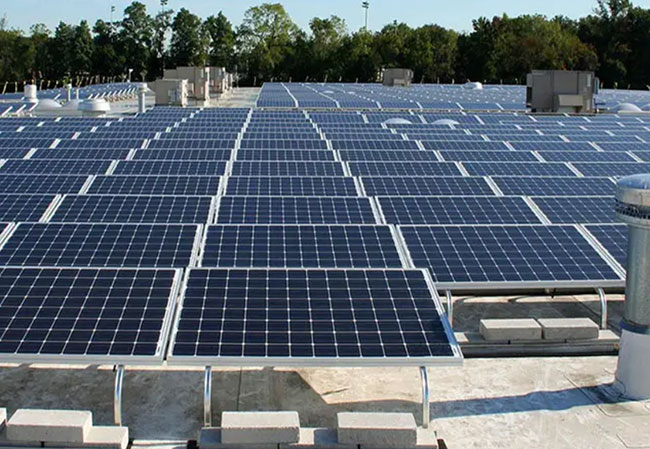Thunderstorm is a threat to solar power system. Since there are many positive and negative charges in the cloud layer of cumulonimbus, the separation of positive and negative charges will produce many electric dipoles or multipoles, resulting in lightning.

What Kind of Damage Do Lightning Cause?
Damage to Solar Panels
Solar photovoltaic panels are not only the core part of photovoltaic power generation equipment, but also the most valuable part of photovoltaic power generation equipment. It converts the radiant energy of the sun into electricity. However, solar panels have to be arranged in the open field, so they are extremely vulnerable to lightning strikes, resulting in the paralysis of the entire system.
Damage to Solar Charge Controller
The solar charge controller controls the working state of the photovoltaic system and protects the battery from overcharge and overdischarge. When the solar charge controller is damaged by lightning or overvoltage, the charging system will be charged all the time, but the discharging system will not discharge; or the charging system will not be charged, and the discharging system will be in the discharging state all the time. At best, the equipment cannot be used, or at worse, the battery will explode, causing damage to the entire system and casualties.
Damage to Batteries
Solar photovoltaic power generation equipment usually uses lead-acid batteries, nickel hydride batteries, nickel-cadmium batteries or lithium batteries to store electrical energy. When lightning strikes, overvoltage invades the battery, which might damage the battery, shorten the battery life cycle, or even cause the battery to explode, resulting in more serious system failures and casualties.
Damage to Inverter
The inverter can convert the direct current power from the solar photovoltaic power generation equipment into alternating current power. Once the inverter is damaged, there will be no voltage input to the user load, or the inverter cannot invert the voltage. So that the DC voltage generated by the solar photovoltaic panel is directly used by the load. Once the voltage of the solar panel is too high, the electrical equipment will be burned.

Lightning Protection for Solar Power System
At present, the most effective and widespread method among the existing measures is to connect the metal parts of electrical equipment to the earth. The grounding system consists of four parts: grounding equipment, grounding body, lead-in wire and earth. Good grounding is the most critical step in lightning protection measures.
The most widely used grounding methods are the following three:
Common Grounding
First, dig a hole with a diameter of about 30cm in the ground, lay salt on the bottom of the hole, and then put the grounding body. After using the PVC pipe to cover the grounding body, fill the gap around the grounding body with soil and compact it, and finally put gravel on it and water it for reinforcement. Ground other grounding bodies in the same way, lay out an isosceles triangle, and connect them with 3.5cm copper wires to form a grounding body inside the photovoltaic field.
In this way, the metal equipment, lightning protection devices, and inverters of all equipment in the photovoltaic power station can be directly connected to the same grounding body. It can be used simply as ground protection and neutral line. Once a lightning strike occurs, it can be used as a lightning protection grounding device.
Single Point Grounding
Due to the influence of the geographical environment, the poles in the photovoltaic field are often struck by lightning and their positions are relatively fixed. For these special poles, we need to install lightning protection devices separately.
Combined Grounding
Combined grounding is a lightning protection device composed of multiple grounding bodies. This kind of lightning protection combination is often arranged in the form of ring, square, radial and so on. In order to reduce the mutual shielding effect, when the grounding bodies are arranged in a ring, it is necessary to ensure that there is no opening in the ring, and the actual distance between two adjacent grounding bodies cannot be less than 3m. The upper end of the grounding body should be reinforced with galvanized angle steel, and the distance from the ground should be less than 1m.
